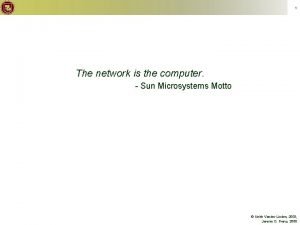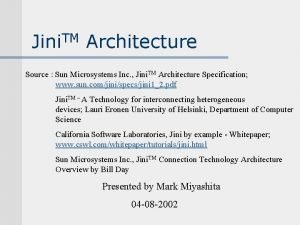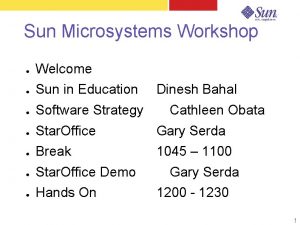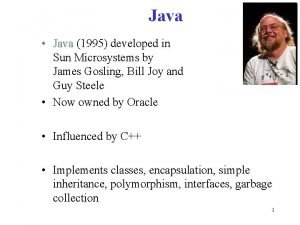Gregg James at Sun Microsystems 1 2 Mallory












- Slides: 12

Gregg James at Sun Microsystems 1

2 (Mallory, 1991)

§ To solve problems by drawing on the talents of variety of individuals. § To foster togetherness in the workplace while tackling projects. § To reduce or eliminate a lack of communication among staff members on projects. § To heighten productivity by encouraging an atmosphere of cooperation. § To achieve a solution that might be unpopular to some but is the desire of the majority. 3

A Teams succeeds when its members have: § a commitment to common objectives § defined roles and responsibilities § effective decision systems, communication and work procedures § good personal relationships 4

§ Studies show diverse teams are either very high performing ones or very low performing ones, with homogenous teams being moderate performers 5

§ Dislike and mistrust § Stereotyping and perceptual issues § Communication problems § Stress § Decreased effectiveness § Less identification with team

§ More ideas, better ideas § Limited groupthink § More creative 7

§ Task related selection § Recognizing differences § Establishing a vision or superordinate goal § Equalizing power § Creating mutual respect § Giving feedback 8

§ Why do we have a virtual team? Situations for a global virtual team? § What are some of the problems/challenges in managing a global virtual team?

§ Geographical distance – time zone and conditions § Cultural distance § Uncertainty § Trust § Leadership § Differences in uses of technology

§ Face to face opportunities at intervals § Communication § Procedural or Task focus § Social messages § Displaying Enthusiasm § Leadership § Coping with uncertainty § Individual initiative § Temporal coordination – scheduling, synchronizing, § Conflict resolution

§ Leadership training – culture and group processes, structures § Team building opportunities § Self management vs team rules template § Manage the environment § Pay systems reflect success in group work § Managing support





















